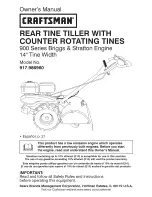
Page 46
15.1
GENERAL
IMPORTANT
Beyond the cadences of checks recommended in the following, in order to keep the unit at
optimum levels of performance and efficiency and prevent incipient failures, we recommend
periodic visits of inspection and control of the unit by qualified personnel.
In particular, we recommend:
4 annual visits to units that operate about 365 days / year (quarterly)
2 visits per year for units with seasonal operation about 180 days / year (one at the start of the
season and another one at mid-season)
1 annual visit for units with seasonal operation of about 90 days / year (starting seasonal)
It’s important that during the initial start-up and periodically during operation routine checks are
carried out. Among them you must also check the suction and condensation as well as the sight
glass located on the liquid line.
Check through the microprocessor installed on the unit if the unit is working within normal
parameters of superheating and sub-cooling. A routine maintenance program recommended is
shown at the end of this chapter while a card collection of operating data is at the end of this
manual. It is suggested to record on a weekly basis all the operating parameters of the unit. The
collection of these data will be very useful to technicians, in case technical assistance is requested
Compressor Maintenance IMPORTANT
This inspection must be performed by qualified and trained personnel.
The analysis of vibration is a great tool for checking the mechanical conditions of the compressor.
It is recommended to check the value of the vibration immediately after starting and periodically on
an annual basis.
Compressor Electrical Connections
It is very important that all the compressors are wired correctly for proper rotation. These
compressors will not tolerate reverse rotation. Verify correct rotation/phasing using a rotation
meter.
If wired incorrectly the compressor will make excessive noise, will not pump and will draw about
half the normal current. It will also become very hot if allowed to run for an extended period.
NOTICE: Do not “bump” the compressor to check rotation as incorrect rotation could
cause compressor motor failure in as little as 4 to 5 seconds!
Improper rotation of the compressors is indicated by a compressor module trip, noisy operation,
no pressure difference on manifold gauges and low amp draw.
Compressor Replacement
If the chiller suffers a failed compressor, use these steps for replacement:
Each compressor has lifting eyes. Both lifting eyes must be used to lift the failed compressor.
After a mechanical failure of a compressor, it is necessary to change the oil in the remaining
compressor and also replace the liquid line filter drier. After an electrical failure of a compressor, it
will also be necessary to change the oil in the remaining compressor, replace the filters driers and
add a suction filter drier with clean-up cores.
Make sure that a heater is correctly installed on the compressor. The heater helps prevent dry
starts.
Note: Do not alter the refrigerant piping in any way as this can affect compressor lubrication.
Refrigerant System Open Time
The CCUF units use oil and therefore refrigerant system open time must be kept to a minimum.
The following procedure is recommended:
Leave a new compressor sealed until it is ready to be installed in the unit. Maximum system open
time is dependent upon ambient conditions, but do not exceed one hour open time.
Plug the open refrigerant line to minimize moisture absorption. Always change the liquid line filter
drier.
Do not leave oil containers open to the atmosphere. Always keep them sealed.
Summary of Contents for CCUF
Page 26: ...Page 26 USER SIDE...
Page 28: ...Page 28 USER SIDE...








































